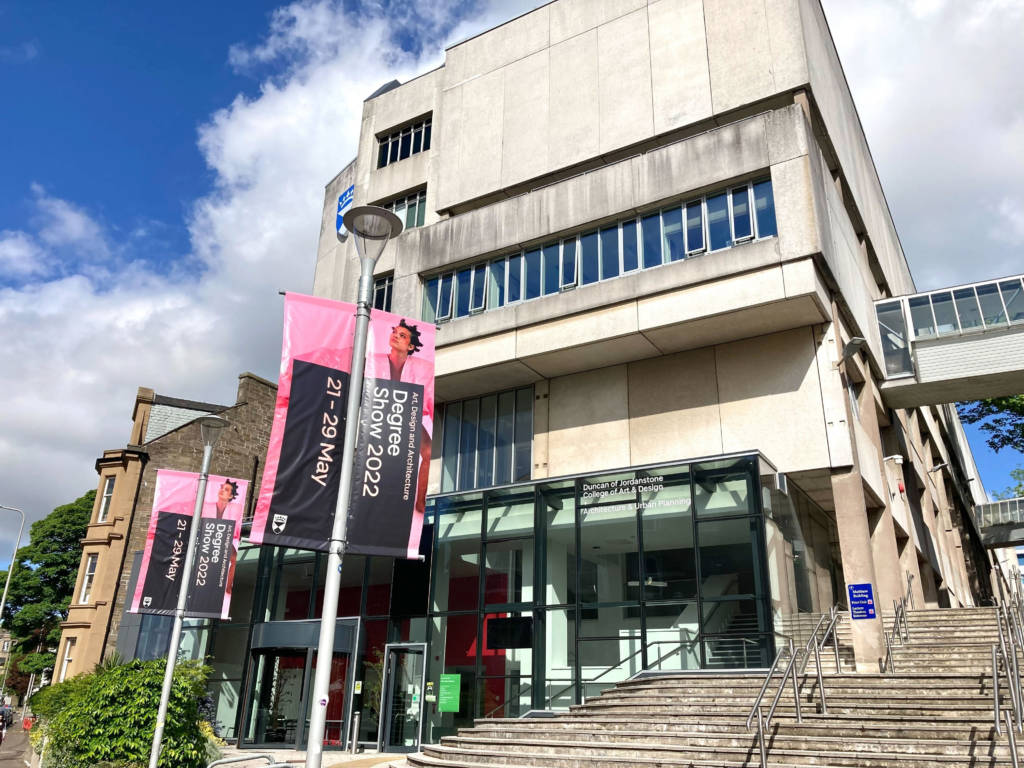
23.05.22

After two years online, DJCAD’s Art, Design and Architecture Degree Show 2022 made a triumphant in-person return to the Perth Road. Things are slightly different from the last time we were here, of course; tickets for the show have to be booked in advance, and the now-familiar sight of hand-sanitiser stations greet you regularly. But despite the Covid safety precautions, there is a real palpable feeling of optimism filling the building. The conversations being had by students and visitors are celebratory, filled with praise and excitement for what they’ve accomplished: a show that’s a culmination of four years of hard work in hard times.
In this blog, we’re taking you through work on display across the building, highlighting a few of the graduate projects inspired by the key intersectional issues that drive our work: Mental Health and Wellbeing; Structures of Inequality; and Recovery: Green, Emerging, Local and Global.
The work of Eleanor Butler in Jewellery and Metal Design is a beautifully tangible example of a project that, instead of being bogged down by the pandemic, takes inspiration from it. Her collection, Fine, casts our minds back to the first 2020 lockdown, and explores the emotional state of the nation at a time when we found ourselves more isolated than ever before. Taking the ubiquitous answer to the question “how are you?” – Fine! – she experimented with creating forms inspired by balloons and stress-balls, using copper and other metals. The result is a collection you want to reach out and touch, squish, interact and connect with, both visually satisfying and a thoughtful exploration of the impact the pandemic has had on our collective mental health.
In a similar way, Norbert Lawniczak’s picture book Wilbert tackles the issue of loneliness, something that’s affected many people, young and old, in the last couple of years. The charmingly illustrated story follows a rare white tiger living alone in captivity as he tries to fit in with the other animals. Don’t worry, it’s a happy ending: he learns how to be content with who he is, despite not having others like him around.
The politics of the pandemic do make an appearance; Fine Art graduate Euan Rutter’s chess-inspired installation Pandemia takes a jab at those in power and the games they play. Featuring a combination of satirical cardboard cut-outs of well-known faces and hand-carved chess pieces, he uses his work as a place to process the social and political events of the last two years to better understand the issues underlying them. Slightly more subtly, Jewellery and Metal Design graduate Rebecca Boyle’s collection creates objects that allow others to share their beliefs and find those who feel the same way, through craft in public spaces.
There’s a real feeling of openness around much of the work on show this year, with many graduates using their collections as opportunities to highlight their own personal experiences. In Textile Design, Joshua McCullough’s work does this in a powerfully honest, raw way. His collection Forgive Me Father visualises his experience during and after a manic episode in which he believed himself to be Jesus Christ. Throughout his large, quilted panels, he pairs the visuals of religious symbolism with his own reflections on his mental health during the period. His work also offers visitors the opportunity to pin their own thoughts and feelings to his quilts, with squares of fabric and pens for anyone who’d like to share. His hope is that his own honesty helps to open up the conversation around mental health, particularly men’s mental health, in a meaningful way.
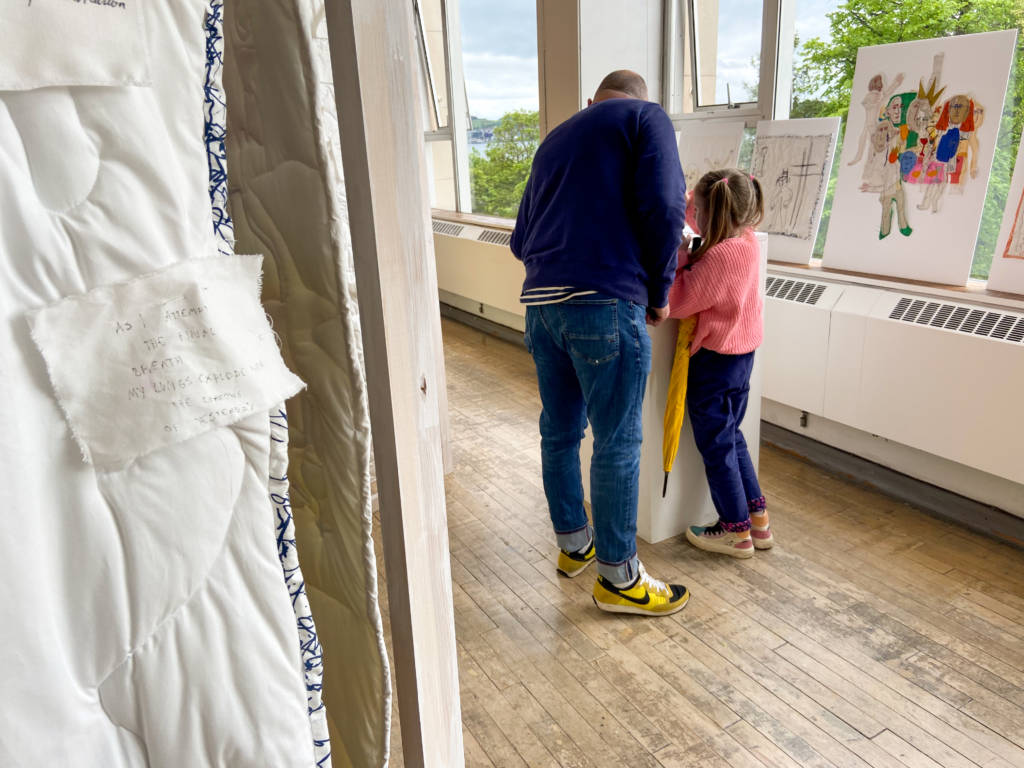
In Fine Art, the work of Farah Hussain has the same feeling of honest exploration around it; her installation Shaadi explores the navigation of her identity as a queer person of colour with her Pakistani upbringing. Michael Cordiner’s work gives us a taster of how he sees the world with dyslexia, turning a homely, living room setting unexpectedly upside down to reflect the way he reads best. And in a moving tribute to her heritage, Stacey Hilton’s show celebrates her traveller roots, bringing her grandmother’s stories to life with her very own traveller camp against the backdrop of the Scottish landscape.
As with every degree show, much of the work looks to the future. Something about this year feels particularly like a call to action, with a growing desire for a redesign of society to work better for its people and the planet. A particularly clever local example is Interior and Environmental Design graduate Florence Allen’s Nine Trades, a multidisciplinary workspace that aims to bridge the gap between the city’s industries and the arts. The project sees her updating the Nine Trades of Dundee to a more relevant modern-day version, adding in professions like IT, Printmakers and Woodworkers alongside the original trades that include Bakers, Fleshers and Weavers. By looking to the future of the city whilst not forgetting its past, she’s designed a space rooted in Dundee that’s authentically focused on connection, creation and collaboration.
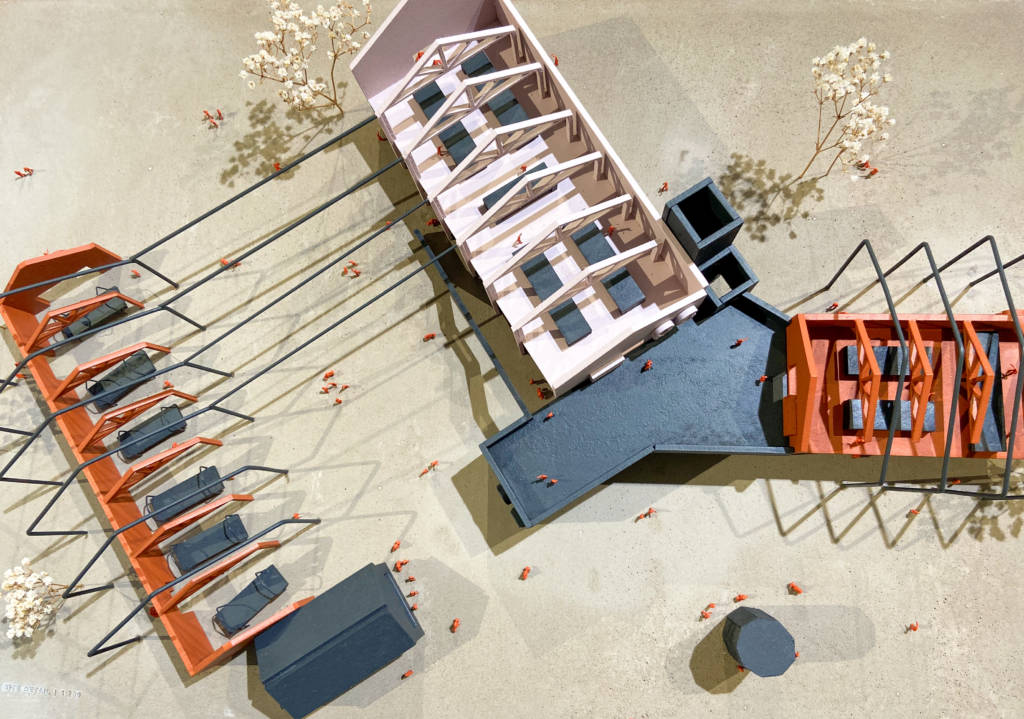
Graphic Design graduate Sophie Stuart’s Ambitious Cities motion graphic also illustrates how our cities can be better. She cleverly animates an audio clip from economist Kate Raworth that asks us, “How can our city be a home for thriving people, in a thriving place, whilst respecting the wellbeing of all people and the health of the whole planet?”. Her cyclical approach to the animation, paired with approachable visuals that naturally merge from woodland scenes to cityscapes, successfully simplifies what could be a tricky subject matter without losing any of the core idea.
There are also brilliant examples of graduates also looking at how we make our society more inclusive, through designing with an awareness of different individuals’ needs. Digital Interaction Design graduate Rachel Reid’s Walkthrough takes us through making spaces—specifically museums—less overwhelming to those with sensory issues. Focusing on those with Sensory Processing Disorders, the project provides a guided museum audio tour with tailored amounts of information given, dependent on pre-set personal data on the user’s age and particular disabilities.
Fin Tams-Gray’s project is another example of truly user-centred design. Based on the well-established but under-used practice of communication passports (documents that let those with disabilities that affect their communication quickly inform people of their likes, dislikes and needs), Book of ____ is an accessible DIY zine kit that helps those with disabilities share who they are in their own words. With visuals inspired by the punk tradition of handmade zines, nothing about them is meant to be perfect and mistakes are encouraged. Though the kit provides the framework to create the zines and instructions for carers to support, the pages are designed to be solely filled with the words, drawings and photos created by the individual they reflect—an innovative way for those who struggle with traditional communication show us who they are.
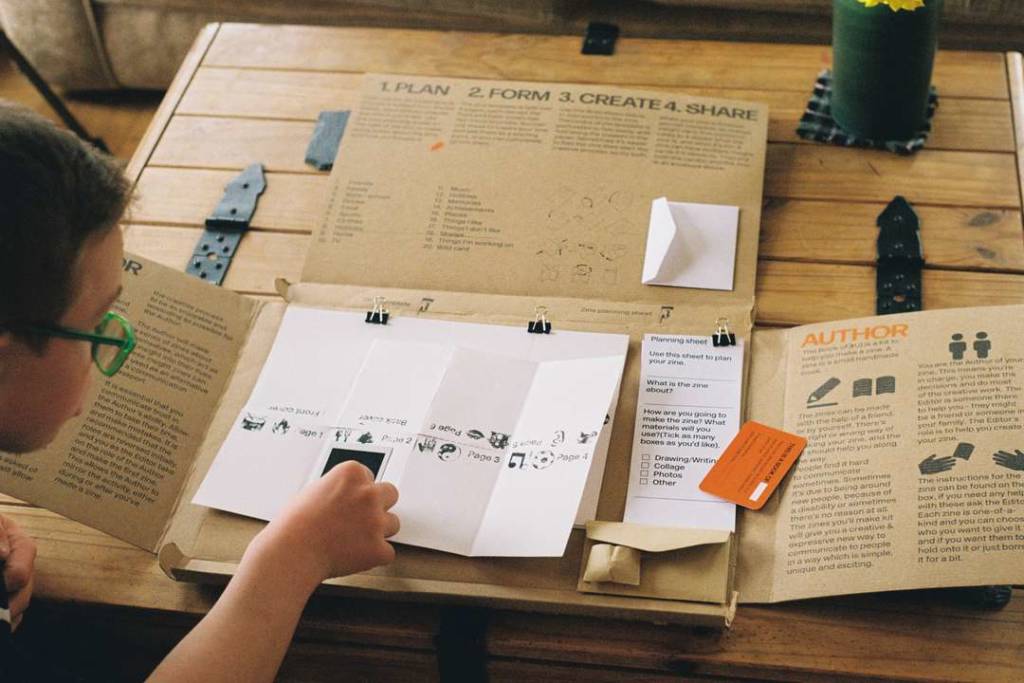
In response to our growing need to drastically curb our impact on the planet, plenty of this year’s graduates are stepping up with solutions. Michael Lawless’s project, Spotify Unwrapped, takes a different approach, instead highlighting the impact our online presence has on the environment. His interactive panel informs us that for every hour of music played on the audio-streaming platform, 55 grams of carbon dioxide is released into our atmosphere, before giving us an option to offset the damage by planting a tree via a dispensed seed-packet. Ecokids, a project by Product Design graduate Mina Hafsaas, takes a habit-building approach to the climate issue, with her paper-making workshop offering a two-for-one: a way for the education sector to recycle their number one waste product, whilst educating kids on the importance of recycling from primary school age. You can even have a go at making your own paper at her stand!
And with an awareness of the Textile Industry being the second most polluting in the world, Sandra Junele investigates the question “When should a material be considered a waste material?” Working with yarn scraps from DJCAD’s own knit department, she has developed a process of sorting, shredding, and binding leftover textile fibres in a homemade biodegradable glue, turning one person’s waste into visually interesting and tactile wall panels to decorate interiors. The balanced colour palette and interestingly embellished surface textures draw you in, but the material itself is the real star. By creating something aesthetic and useful with waste, she’s encouraged us to realise the potential and take responsibility for what we leave behind.
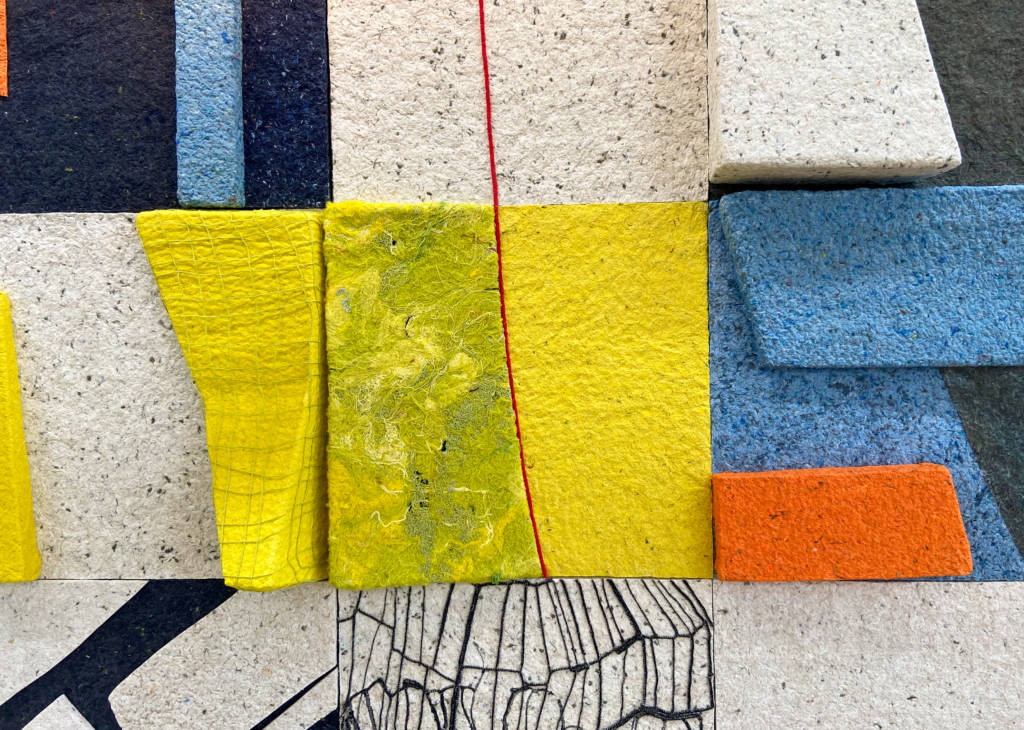
With everything that’s happened in the last few years, it’s a joy to see such brilliant, thoughtful work still coming from the degree show. If you can visit in-person, we highly recommend it—the show runs until Sun 29 May and you can book your tickets online. Can’t make it? There’s also an online showcase!
It’s worth bearing in mind that DJCAD isn’t the place to see new graduate work in the city this week; visit the Abertay Digital Graduate Show on Fri 27 May, and see a selection of 2021 Fine Art graduates from across Scotland exhibiting at GENERATORprojects’ show They Had Four Years, until Sun 19 June.

If you would like to support us in creating even better content, please consider joining or supporting our Amps Community.